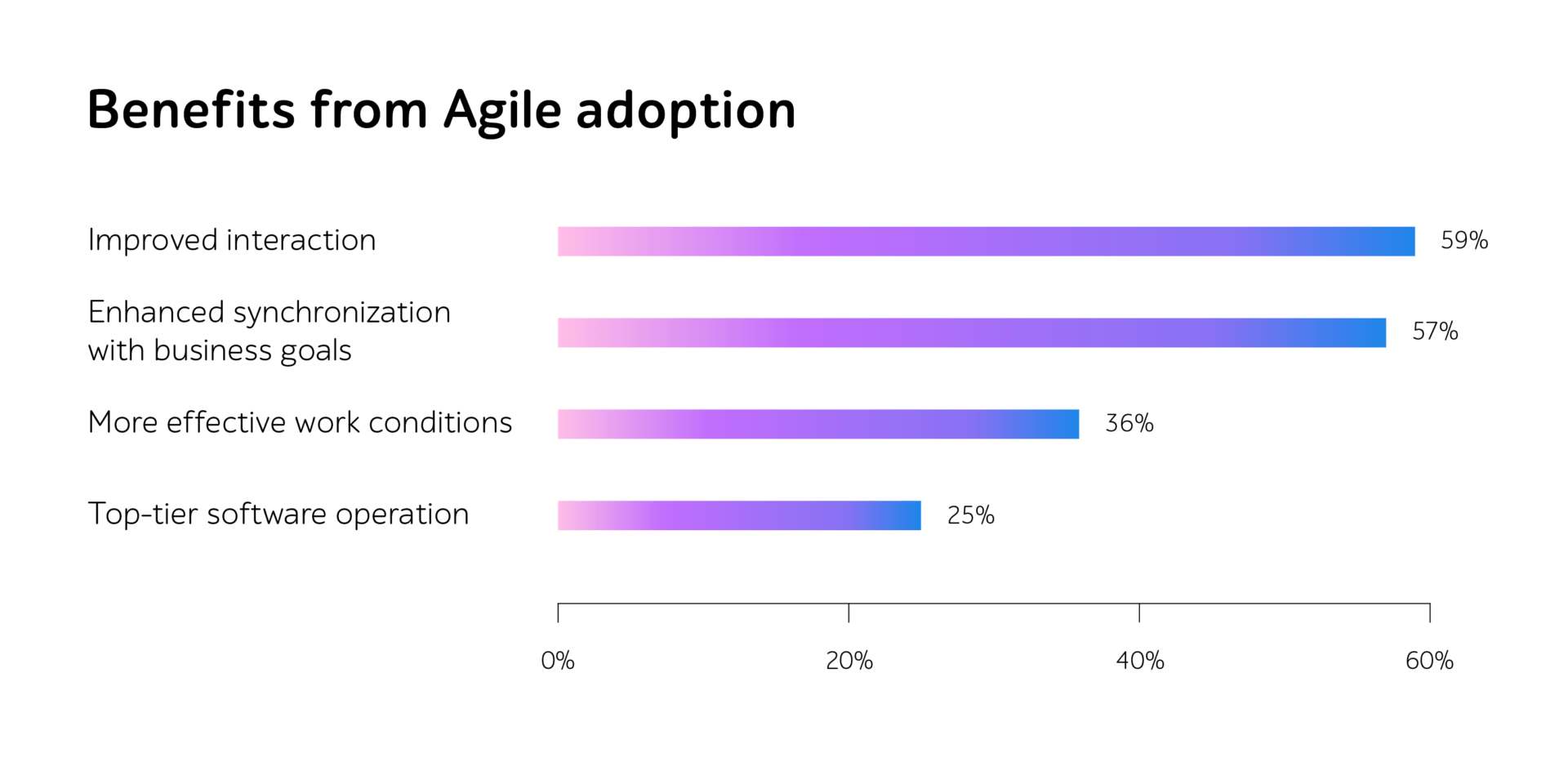
Riding the wave of innovation: top 6 QA trends shaping 2025
Organizations worldwide are navigating a sea of technological possibilities. For instance, Gartner predicts that by 2025, we will see polyfunctional robots capable of performing multiple tasks simultaneously or spatial computing that takes AR/VR technologies to the next level. Similarly, Deloitte anticipates a shift toward the widespread integration of AI into daily operations.
These modern-day innovative solutions rely heavily on advanced tech, which means that their implementation may be challenging. Quality assurance can help smooth this process.
With modern software testing strategies and techniques, companies can effectively adjust their QA workflows and attain desired goals.
Without further ado, let’s see what QA trends will rule 2025!

Trend #1. Ensure flawless operation of intelligent products to outpace market competition
Based on IoT, AI, and ML, intelligent and connected IT products leverage advanced software capabilities to collect, process, and transmit data through embedded sensors and connectivity features. These technologies are becoming deeply integrated into our daily lives. From smart home devices and autonomous vehicles to fitness trackers, smart cities, industrial IoT systems, and connected logistics solutions for tracking package loading — it’s hard to imagine life without them today.
However, these solutions possess complex interactions between numerous components, work with data in real time, and connect to multiple devices. This complexity emphasizes the crucial role of thorough testing to ensure failsafe operation, seamless performance, and compliance with requirements.
The respondents of the World Quality Report 2024-25 (WQR) believe this as well — 100% of them either state that software testing of intelligent products is highly important or somewhat relevant. They particularly emphasize functional (30%), security (23%), and data quality (21%) verifications. This focus likely reflects the critical role these areas play in ensuring the usability, reliability, and trustworthiness of intelligent systems, which are essential for maintaining user confidence and meeting performance expectations.
Testing such solutions can be challenging due to difficulties in defining optimal test coverage, testing AI models, and managing endless integrations. However, companies can address these challenges effectively with the right strategies and tools.
They can prioritize continuous learning for their staff, utilize AI to enhance testing accuracy and speed, and implement a comprehensive testing strategy to minimize the risks of production issues.
Business impact: by giving due attention to testing intelligent and connected software products in 2025, companies can deliver high-quality software that meets user expectations, complies with regulations, and adapts effectively to real-world complexities.
Trend #2. Make security your business imperative to release resilient digital products
With an average cost of a data breach worldwide reaching almost $5 million in 2024 and nearly 80% of companies still experiencing data exposure, security testing is no longer an afterthought but a paramount activity for ensuring the safety and reliability of digital systems across industries. It’s the first line of defense in the battle against cyber threats that fosters trust, compliance, innovation and helps prepare IT products for the challenges of tomorrow.
So, how can organizations embrace a comprehensive security testing approach to minimize the risks of cyberthreats? Here are a few tips to consider:
- Build a secure software development life cycle by integrating security measures throughout every phase, ensuring vulnerabilities are identified and mitigated as early as possible.
- Conduct various security tests, including vulnerability assessment, penetration testing, static code analysis, pre-certification security audit, to identify weaknesses that could be exploited by malicious intruders and proactively address them.
- Automate security verifications to continuously test for vulnerabilities during code writing and deployment, minimize risks of human errors, and accelerate testing cycles.
- Create comprehensive education programs for your employees to help them understand the importance of security and maintain a safe environment.
Business impact: by integrating security throughout the development life cycle in the upcoming year, organizations can minimize the risks of cyber threats in today’s rapidly evolving digital landscape and ensure long-term resilience.
Trend #3. Provide effective data management to attain accurate software operation
Data quality has become a cornerstone of modern software development projects, driving the creation of reliable and efficient solutions. With the rise of generative AI, the emphasis on high-quality, diverse, and representative data has grown, as it directly influences the accuracy and relevance of AI-generated insights.
And statistics only prove this fact. Only 1% of the WQR interviewees mentioned that data quality is not important to them, while the overwhelming majority consider that it contributes to better software quality, improved client satisfaction, decreased expenditure, or enhanced deployment speed.

Source: World Quality Report 2024-25
Software testing teams can assist in the creation of data validation mechanisms using automated tools to identify any anomalies, inconsistencies, and issues. Companies can also engage QA engineers to address data shortages that could negatively impact analytics or operations. Additionally, involvement of QA teams can contribute to aligning data validation processes with industry standards and legal requirements.
Business impact: by relying on proficient QA providers, businesses can improve data accuracy and consistency, maintain operational continuity, and prevent regulatory penalties.
Trend #4. Embed quality engineering into Agile workflows to improve software delivery
Agile methodologies continue to gain momentum, and this year is no exception — 71% of survey respondents confirmed their reliance on Agile-driven workflows. This widespread adoption comes as no surprise, given the numerous benefits Agile offers, including improved collaboration, better alignment with business goals, more efficient work processes, and the delivery of high-quality software.

Source: The 17th State of Agile Report
At the same time, the WQR highlights that in the upcoming year, organizations will need quality engineering skills more than ever to support Agile workflows — particularly in areas related to AI/ML, generative AI, cloud, big data, and BDD/TDD (66%).
This growing demand likely stems from the rapid increase in software complexity driven by evolving end-user expectations and the widespread adoption of cutting-edge technologies. These circumstances call for a more sophisticated approach to measuring quality, ensuring seamless performance across distributed environments and maintaining the efficiency and security of Agile processes.
Unfortunately, challenges with the adoption of quality engineering within Agile workflows still arise — from neglecting it as a strategic initiative (56%) to a mismatch between quality engineering processes and Agile (44%).
To successfully overcome them and ensure effective quality assurance within Agile projects, companies may focus on continuous learning and upskilling of their testing teams, integrating metrics that gauge business value, and start prioritizing quality engineering in an overall testing strategy.
Business impact: by paving the way for quality engineering in 2025, organizations can identify and resolve software glitches earlier in the SDLC and release a higher-quality product that meets all functional and non-functional requirements.
Trend #5. Supplement test automation with emerging tech to boost its efficiency
With the need for fast-paced development activities, test automation has been one the most valuable software testing practices, allowing IT organizations to attain more effective workflows. For instance, the WQR respondents acknowledge that they expect test automation to improve confidence (61%), release more functionality (60%), lessen operations expenditure (58%), and boost user experience (53%).
Although this practice is beneficial for streamlining business operations and boosting testing accuracy, in the upcoming year QA teams may rely more on next-generation technologies to elevate the effectiveness of test automation.
Companies can take a closer look at:
- AI
Currently, companies are expanding investments on AI due to the value it brings to business. Why is it so? This technology helps QA teams to automatically analyze software behavior, forecast possible issues early in the development, update scripts swiftly in response to alterations of the IT product, and ensure smart prioritization based on insights from historical data.
- Low-code/no-code approach
47% of respondents in the WQR mentioned that they consider low-code/no-code solutions to be advancing test automation. With their help, companies can expect to simplify the adoption of automated workflows on the projects and create scripts even without high-level experience in programming.

Business impact: by adopting cutting-edge technologies with expert oversight, organizations have the potential to speed up testing cycles without sacrificing quality, lower down operational costs in the long term, and diminish the risk of rework in the production environment.
Trend #6. Revamp QA practices to shape an eco-friendly tomorrow
Smart management of resources isn’t just a trend, it has become a must-have for all of us, including businesses across various industries, to effectively combat climate change and preserve our environment for future generations.
And representatives of the IT industry agree. The WQR states that 98% of its respondents recognize the importance of sustainability to their daily operations, while 44% of companies already leverage Green IT metrics to reduce their impact on the planet. Even more pleasant is the fact that 85% of Deloitte’s latest report interviewees acknowledged to have boosted their sustainability investments.
Given these facts, what exactly can software testing organizations do to shrink carbon emissions, decrease waste production, and infuse eco-friendly practices into all stages of the software life cycle? Companies can consider the following steps:
- Develop a sustainability-first mindset among your employees. By raising awareness and providing comprehensive training on the importance of curtailing the adverse ecological effects of IT activities, organizations can define space for improvement, better optimize their testing processes, and build a truly green culture.
- Implement and utilize specialized metrics. With their help, QA providers can more effectively leverage existing resources, lower down carbon emissions, decrease waste, and always meet set goals.
Business impact: by infusing sustainability into development activities in 2025, organizations creating software applied across diverse industries can optimize operational expenditure, ensure compliance with environmental regulations, and boost brand loyalty.
Afterword
To navigate a rapidly changing environment and succeed in the upcoming year, organizations can embrace pivotal QA trends: thoroughly test intelligent software, pave the way for overwhelming security, ensure effective data management, infuse quality engineering into Agile projects, strengthen test automation with emerging tech, and care about sustainable business operations.
Integrating these practices into daily processes enables companies to reduce operational risks associated with software failures, boost satisfaction by delivering glitch-free customer journeys, safeguard confidential information, and streamline operations. Additionally, organizations can showcase a commitment to environmental or regulatory accountability and attract eco-conscious consumers.
Reach out to a1qa’s team to improve software quality, accelerate testing processes, or optimize operational expenditure.








